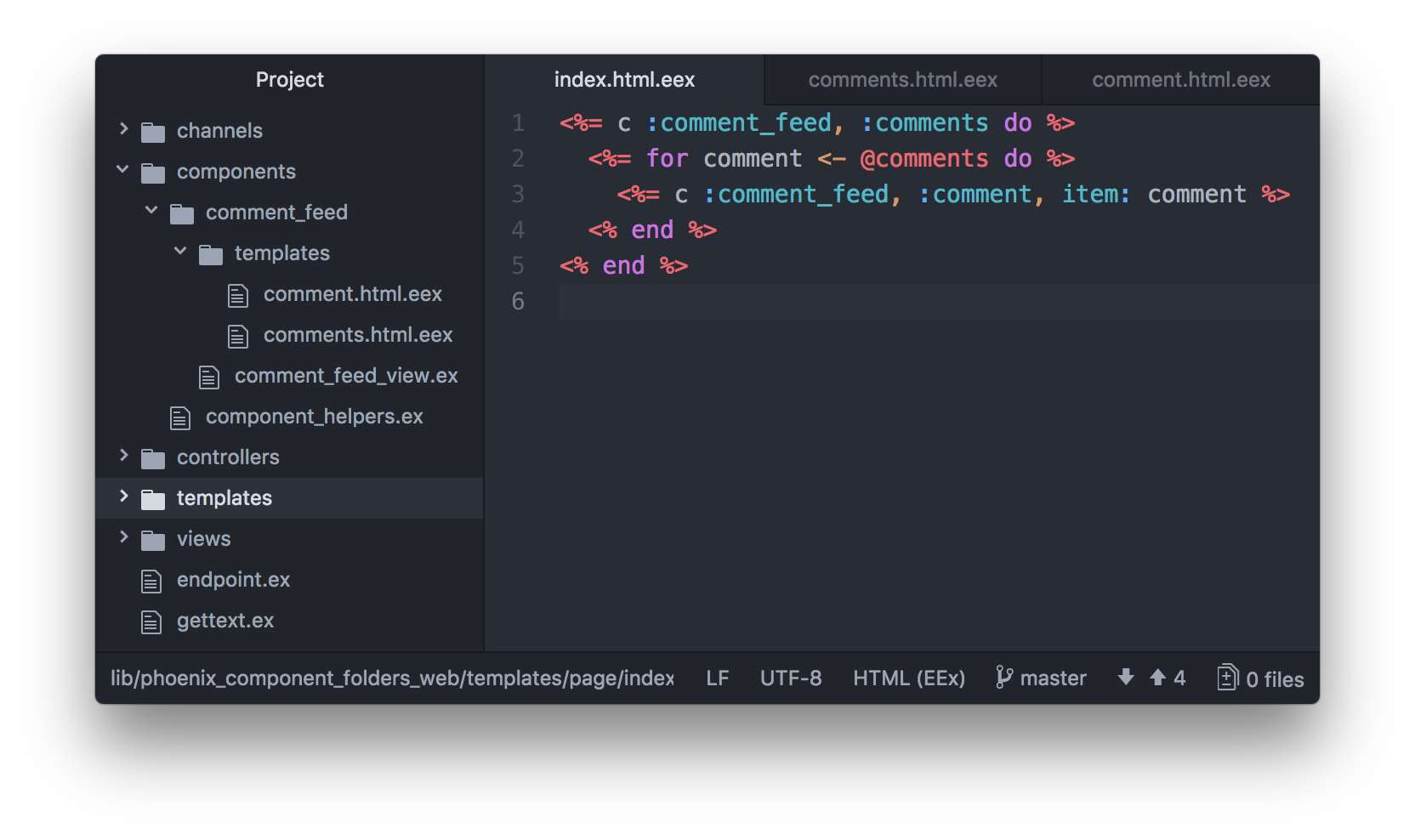Reusable UI components on Phoenix framework
Quick tutorial and demo app
If you're using Phoenix to render rich UI components (à la React or Vue), it might be more convenient to group all related code and tests into separate component folders and to make use of some view helpers:
Here's how to do it on Phoenix 1.3. If you're using version 1.2, just note some minor changes like replacing path lib/my_app_web with web.
Grab file component_helpers.ex and place it in new folder lib/my_app_web/components.
- def view do
+ def view(opts \\
+ [root: "lib/my_app_web/templates",
+ namespace: MyAppWeb]) do
quote do
- use Phoenix.View, root: "lib/my_app_web/templates",
- namespace: MyAppWeb
+ use Phoenix.View, unquote(opts)
# etc...
import MyAppWeb.Gettext
+ import MyAppWeb.Components.ComponentHelpers
end
end
# etc...
defmacro __using__(which) when is_atom(which) do
apply(__MODULE__, which, [])
end
+ defmacro __using__({which, opts}) when is_atom(which) do
+ apply(__MODULE__, which, [opts])
+ end
endNext, you'll need to add a view for each component namespace. For instance, as in the screen shot above, for namespace :comment_feed you'd create file lib/my_app_web/components/comment_feed/comment_feed_view.ex:
defmodule MyAppWeb.Components.CommentFeedView do
alias MyAppWeb.Components.ComponentHelpers
use MyAppWeb, {:view, ComponentHelpers.view_opts(:comment_feed)}
endThat's it. Now you're ready to add some templates. See commits Add example components and Migrate example components to the new 1.3 directory structure for a minimal example and add controllers / channels to your UI components as needed. Let's finish up with some usage examples:
<%= c :comment_feed, :comments, assigns %> <!-- pass all assigns from controller -->
<%= c :comment_feed, :reply_form %> <!-- no assigns -->
<%= c :comment_feed %> <!-- default to index.html.eex template -->In all the code above, remember to replace occurences of MyApp, my_app, PhoenixComponentFolders and phoenix_component_folders with your app's name.
- Phoenix 1.3.0 or later
- Elixir 1.7 or later
- Erlang 21 or later
To start your Phoenix server:
- Install dependencies with
mix deps.get - Install Node.js dependencies with
cd assets && npm install - Start Phoenix endpoint with
mix s
Now you can visit localhost:4000 from your browser.
See LICENSE.
